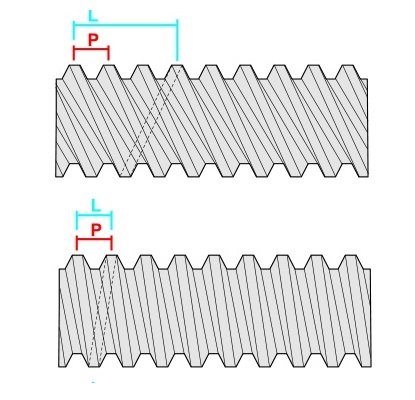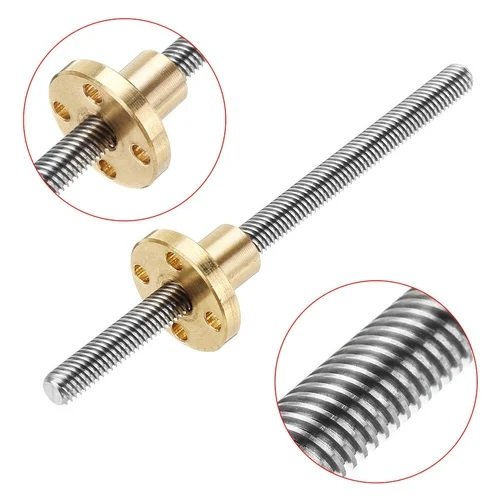What is the meaning of pitch and lead in a screw?
Pitch refers to the distance between two grooves or two peaks on the screw and is commonly used as threads per inch or thread per cm. Lead denotes the linear distance the nut travels per one complete revolution of the screw (360 degrees), which is the typical specification for ball screws, lead screws, etc. The ratio of lead per pitch is called a start. In single-start screws, the pitch and lead are the same. However, in the case of multiple-start screws, the lead is calculated by multiplying the pitch by the number of starts. For example, lead in a four-start T8 lead screw equals 8mm and the pitch equals 2mm.

What is the impact of pitch and lead on motion accuracy?
If you are interested in building CNC machines or 3D printers, you are undoubtedly familiar with lead screws and their structure. Lead screws are one of the most widely used power transmission screws, and factors such as reasonable price and easy installation have made them very popular.
However, when we want to use lead screws, we face various challenges regarding their dimensions and accuracy. One of the most common questions that is important for engineers is whether the lead screw pitch size affects its accuracy or not. Lead screws produced by a company with the same model are similar in terms of manufacturing accuracy and tolerance, and their dimensions do not affect their accuracy. However, generally, the smaller the lead of the lead screws, the higher the accuracy of motion control. For example, if you want to move forward for 1mm, in a T8 lead screw with 2mm lead, you need 180-degree rotation in the stepper motor. However, you need 45 degrees rotation for the same linear motion in an 8mm lead T8 lead screw. But this does not mean that lead screws with smaller leads will be more suitable. Rather, their pitch and lead are chosen based on the mechanism they will use.

This also applies to the diameter of the lead screws. As the diameter increases, their maximum speed also increases, but with increasing diameter, the friction between the screw and the nut also increases. Therefore, the most important factor in choosing the diameter and lead of lead screws is their practical application, which we expect from them.




